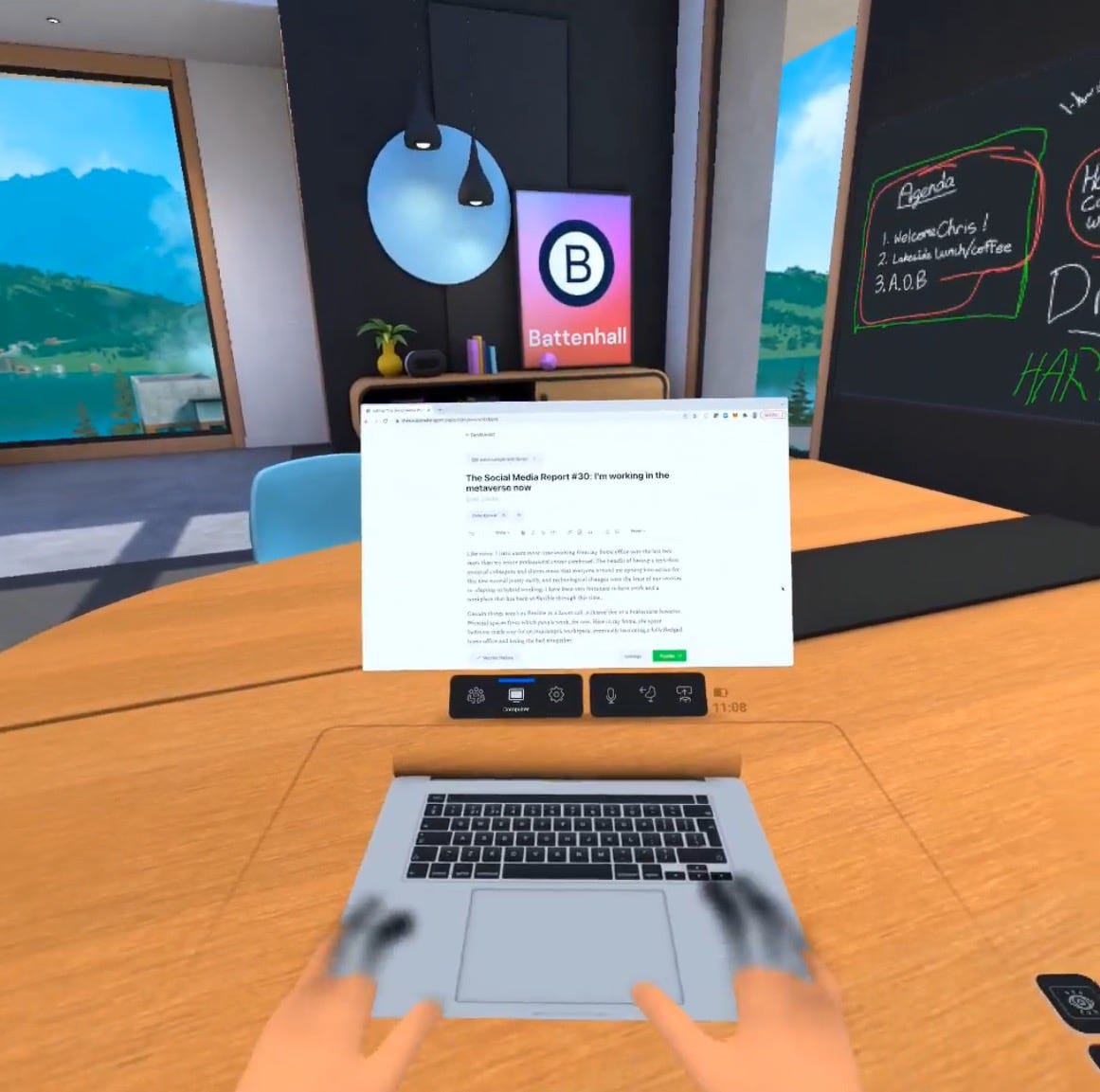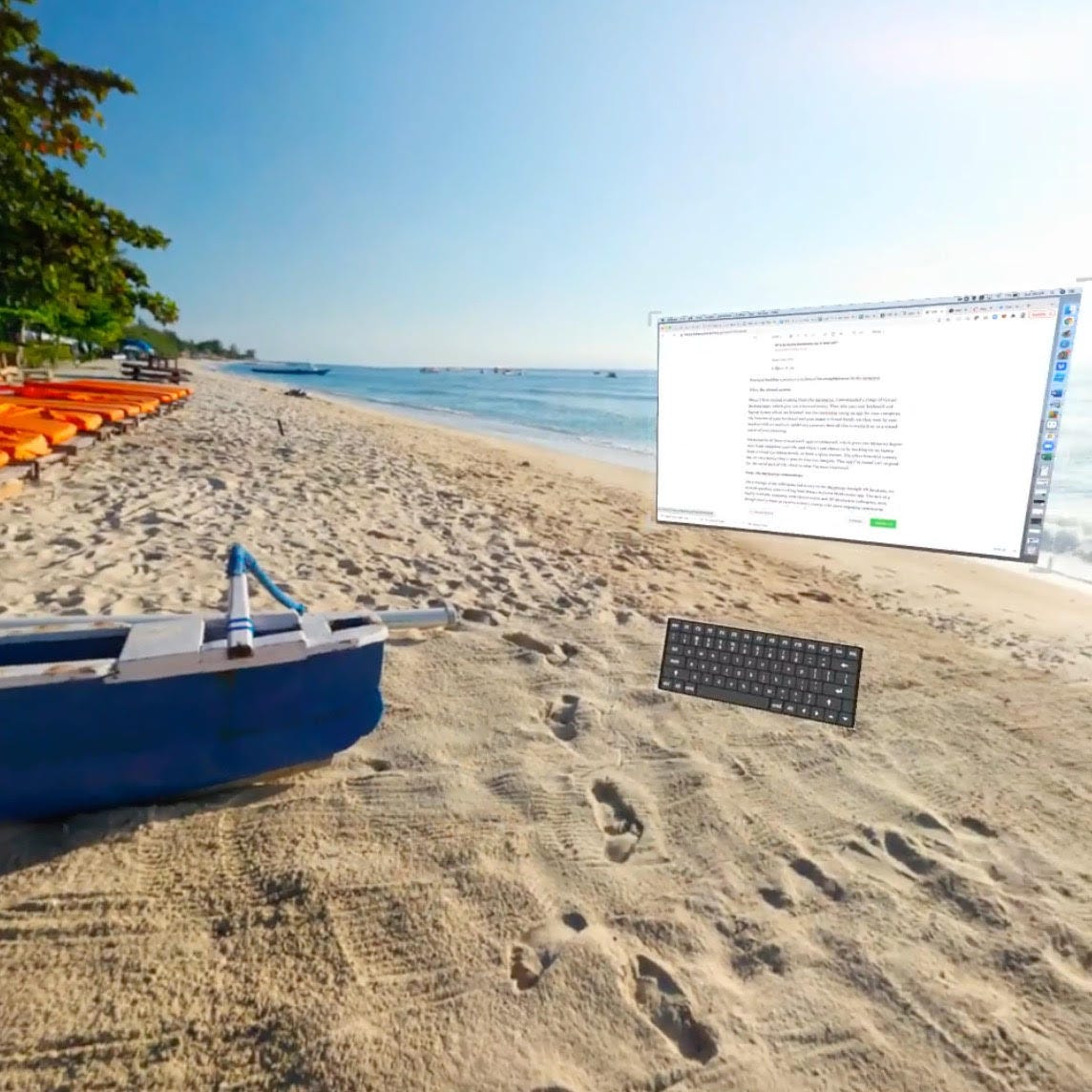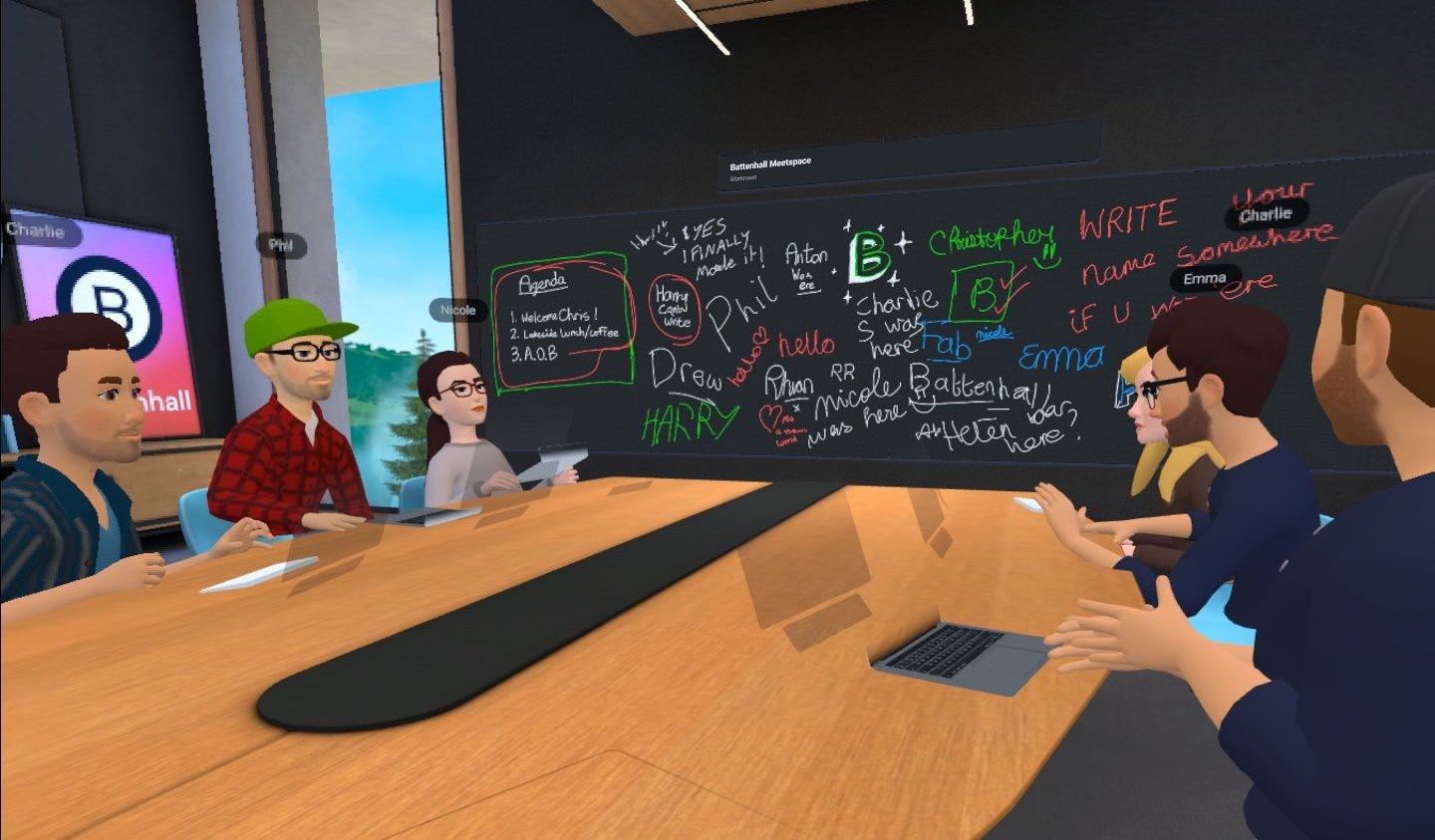The Social Media Report #30: lessons from a month working in the metaverse
From deep thinking and communities to neck ache and sprained wrists
For over 15 years now I have been exploring virtual worlds of one description or another. I worked for Second Life back in 2006, I was lucky enough to use the Oculus before it became part of Facebook, and more recently building branded worlds, like Dover Castle for English Heritage in Minecraft, a campaign that my daughter dreamt up. I’ve spent a year now in Decentraland, I have an office in Roblox, but the latest innovation in the metaverse which is a game changer is Meta’s collaborative workspace, Horizon Workrooms, which brings together colleagues and workable computer desktops to take full VR social media metaverse to another level.
I’ve spent a month working in the metaverse, in Meta’s Horizon Workrooms, in an attempt to see how it can breathe life into the daily video calls which now define hybrid work. Whilst nothing can replace real life, VR work adds another dimension to community-building, collaboration and presence if you have colleagues you aren’t in front of IRL. Here’s what I’ve picked up after a month working in the metaverse.
Battenhall’s office in Meta’s Horizon Workrooms.
Like many people, have spent more time working from my home office over the last two years than my entire professional career combined. The benefit of having a tech-first group of colleagues and clients has meant that everyone around me sprung into action for this new normal when lockdowns first started, so technological changes were the least of our worries in adapting to hybrid work. The real transition was about how to best navigate a new world of screen time.
As the months have passed, my company, Battenhall, has recruited talent from all over the world, so while we started lockdown as a UK team waiting for its London office to be able to reopen, we’re now spread far and wide, and remote work is the majority of work. Screen time is the majority of work time.
Digital tweaks to work routines have helped make this hybrid much closer to the experience of a creative office, which has been critical to maintaining energy and productivity over the last two years. We have virtual coffee mornings for those who want to catch up before the day starts, there’s an office Discord channel to simulate background office chatter throughout the day, and of course every document and assignment is collaborated on in the cloud. But flat screens and Zoom calls only go so far when connecting communities.
The advent of the metaverse has shaken this up: “It makes Zoom feel prehistoric. I wasn't expecting the sense of presence to be so profound,” as Jim Rowe-Bot put it on my LinkedIn.
The metaverse and building communities
In my November edition of this newsletter, I explained the incarnations my journey through the metaverse has taken, and since then, I’ve been working at length in virtual reality work spaces. Meetings with colleagues and clients, deep work (writing basically), brainstorms and catch-ups in the metaverse are at first a mind-blowing experience, and then after time as more people join, communities emerge, which is where the real action will play out.
I’ve now spent a month working in the metaverse, from desks in a range of different virtual locations. Walking around a metaverse, building an office there to walk around or play in, acquiring land, that’s all actually a very straightforward type of thing to do if you’ve ever spent time online, and it’s all very simple. Buying a plot of land or your securing your brand name in the metaverse isn’t much more difficult than buying a URL on GoDaddy or an item off eBay. What’s harder is racking up the hours so that you can apply it all for work. And this is where Meta’s Oculus comes in.
Buying or building a presence is technical but straightforward in the metaverse
First, the virtual screen.
When I first started working from the metaverse, I downloaded a range of virtual desktop apps, which give you a layered reality. They mix your real keyboard and laptop screen which are beamed into the metaverse using an app for your computer, the location of your keyboard and your avatar’s virtual hands are then seen by your headset with its multiple spider eye cameras, then all this is overlaid on to a virtual world of your choosing.
My favourite of these virtual work apps is Immersed, which gives you Minority Report style hand-computer controls, and where I can choose to be working on my laptop from a virtual Caribbean beach, or from a space station. The effect beautiful scenery has on your laptop time is greater than you imagine. This app I’ve found isn’t so good for the social part of VR, which is what I’m most interested in exploring at the moment.
Working from the beach in Immersed, writing this newsletter
Next, the metaverse communities
Once enough of my colleagues had access to the metaverse through VR headsets, we started spending time each day working together from Meta’s Horizon Workrooms app. The mix of a highly workable computer, with spatial audio, and 3D interactive colleagues (even though they’re there as cartoon avatars) creates a far more engaging community experience than you could imagine. Everyone I’ve used this application of the metaverse with has been blown away, and as the technology develops, it will only get more advanced and easy to use.
When you’re with colleagues in the metaverse you notice how surround sound, people’s height, proximity to one another and basically just being in VR makes such a huge difference to the experience of screen time.
Seven of us in the Battenhall metaverse office
The downsides are the obvious ones: the headset you wear isn’t natural. It weighs you down, gives you a red face, and you can really only experience VR in 30-45 minute bursts at the most as a result. Spend much more time and you get a neck ache, and you’ll feel quite spaced out when you re-enter the real world. I even managed to sprain my wrist from the constant movement of the handset that you do when setting everything up, and I wasn’t the only one of my colleagues to do so! But limiting screen time to bursts perhaps is a good thing anyway.
The future of the metaverse for work and communities
As more people get their hands on and get used to VR, this way of community building will evolve. Oculus is generally considered the market leader, but other kinds of VR tech exist, and more brands are getting involved, too, with Apple’s rumoured glasses being the most hotly anticipated.
As the VR headsets themselves become less cumbersome, experiencing the metaverse will become easier, but it’s also the the layering of reality into the metaverse that will be a game changer.
Currently many people experience the metaverse as a purely virtual world, but with Meta’s Oculus and Workrooms experience you can build reality into the metaverse too. I have a sofa in my home office, for example, as well as my chair, desk and laptop. I was able to draw the furniture into my virtual office too, so as well as being able to type and work, my surroundings are also layered into the virtual world, meaning I can move around. As this evolves, you could realistically experience the real world when in the metaverse rather than departing it, making it more like AR than VR.
The evolution of social media is the focus of this newsletter, as was it for its previous incarnation back as far as 2006 when I first set this project up. It’s timely then, that 2006 was also the year I first entered the metaverse, and now that’s stepping up a gear too.
In the forthcoming editions of this newsletter I’m going to explore some of the pressing issues that I’m experiencing in public parts of the metaverse, from safety to branding and entertainment.
The Social Media Report is written by Drew Benvie, founder & CEO of Battenhall.
You can follow The Social Media Report on Twitter at @TheSMReport. Suggestions for stories can be emailed to db@battenhall.com. Thank you for reading.






